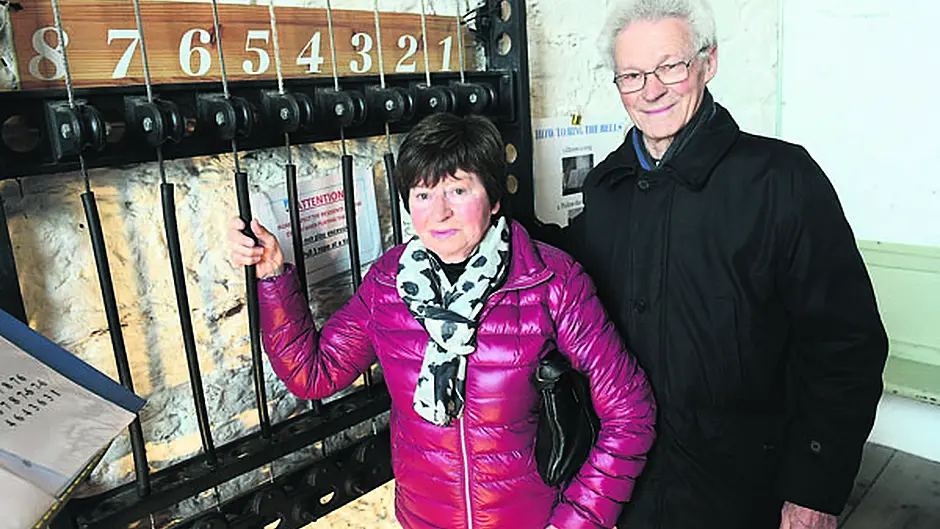A West Cork priest who lost his brother in the Tuskar air disaster 50 years ago has spoken of the grief suffered by all the families as they still seek answers as to what caused the crash which claimed the lives of 61 people.
A WEST Cork priest who lost his brother in the Tuskar air disaster 50 years ago has spoken of the grief suffered by all the families as they still seek answers as to what caused the crash which claimed the lives of 61 people.
Fr Charlie Nyhan, a native of Ballinspittle, and currently parish priest in Carrigaline, lost his brother John in the tragedy when Aer Lingus Flight EI 712 went down near the Tuskar Rock at around 12.15pm on March 24th 1968.
‘The grief hasn’t disappeared even though it was 50 years ago,’ he said. ‘It is still there but it is more peaceful after all those years. We still don’t know what really did happen and that is an unanswered question that we would like to get more facts and clarity about.’
Speaking before he concelebrated a special Mass of Remembrance with Bishop of Cork and Ross Dr John Buckley at the Church of the Assumption in Ballyphehane, Fr Nyhan recalled how he was in Peru when the tragedy happened.
‘I was in Peru at the time and communication between Ireland and Peru was not very good in those days and I was thinking of John and all his fellow passengers and I was thinking of my mother and father and my brother and sister and all our relatives at home.
‘I would have liked to be there but it wasn’t feasible to come home at the time and I didn’t get home until December – there was no funeral because John’s body was never found so it’s very special to have this celebration and remember them all again and the loss that everyone felt at the time.”
Among those at the special Mass of Remembrance was the Mayor of Cork County, Cllr Declan Hurley and the Lord Mayor of Cork, Cllr Tony Fitzgerald while President Michael D Higgins was represented by his aide-de-camp, Comdt Brian Walsh.
Bishop Buckley said that the Tuskar Air Disaster was a particular tragedy for Cork as 36 of those who died were from the city or county, with many of them returning to London where so many Cork people had gone to search for employment in the 1950s and 1960s.
Bishop Buckley recalled that he knew four of those who died on the ill-fated flight, former pupils of St Finbarr’s College Farranferris, Ballinspittle’s John Nyhan and Michael Cowhig from Kilbrittain, Ballyphehane parish priest, Fr Edward Hegarty and Gus O’Brien from Douglas.
‘I remember the day very well I was just appointed as a young priest at Farranferris College and I was returning there from my home parish of Iveleary when we got a news flash that a plane was missing and later on that evening, we were told there was little hope of finding survivors,’ he said.
There were many links to West Cork on that tragic flight, including passengers Rita and Chris McCarthy from Skibbereen and Baltimore respectively, and their son Jeremy. They had been on holiday in West Cork from London.
The worst tragedy in Irish aviation history involving an Irish plane, the Tuskar air disaster saw 57 passengers and four crew perish aboard the Aer Lingus plane, St Phelim, when it plunged 17,000 feet into the sea off the Wexford coast.
The last words heard from the pilot of the St Phelim, Capt Barney O’Beirne, recorded by London Air Traffic Control were at 11.57 am as the plane moved along its designated course just south of Hook Head on that sunny spring morning: ‘Twelve thousand feet, spinning rapidly.’
Following years of speculation and various theories as to what happened Aer Lingus Flight EI 712, then Minister for Public Enterprise Mary O’Rourke commissioned a new report in 2000.
Although the report found the tragedy was most likely caused by failure in the St Phelim’s tailfin, possibly due to metal fatigue, corrosion or bird flutter, it did rule out the possibility of the plane being struck by a missile or colliding with another aircraft.
Prayers were said for all 61 victims as their names were read out and 61 candles were lit during the mass which was attended, not just by relatives of the deceased, but by many retired staff from both Cork Airport and Aer Lingus who were working on the day of the tragedy.
Prayers were also said at the mass for four people who perished at Cork Airport in August 8th1964 when a Piper Comanche crashed and six people who died at Cork Airport on February 10th 2011 when the Manx 2 flight from Belfast crashed with the loss of two crew and four passengers.








